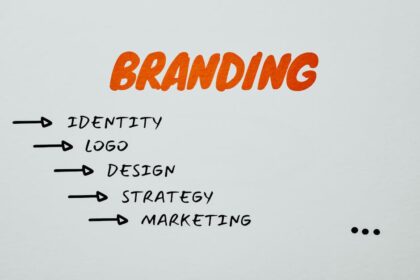Foundational Pillars for ROI-Driven Video Campaigns
Maximizing Return on Investment (ROI) in video campaigns necessitates a robust foundation built upon meticulous planning and a deep understanding of core marketing principles. Without these foundational elements, even the most visually stunning video can fall short of its business objectives. The journey to high ROI begins long before a camera starts rolling. It commences with defining clear, measurable goals, understanding the audience intimately, and strategically allocating resources. This initial phase sets the stage for every subsequent decision, from creative development to distribution and measurement, ensuring that every dollar spent is directed towards tangible outcomes. It requires a strategic mindset that views video not just as a creative output but as a powerful business tool, capable of driving specific, quantifiable results across the entire marketing funnel. The emphasis here is on precision and foresight, transforming ambiguous aspirations into actionable strategies that can be tracked, optimized, and ultimately, validated by ROI.
Defining Clear Objectives and KPIs
The cornerstone of any successful video campaign, particularly one focused on ROI, is the precise definition of objectives and their corresponding Key Performance Indicators (KPIs). Vague goals like “increase brand awareness” are insufficient; they must be quantified and tied to specific metrics. For instance, if the objective is brand awareness, KPIs might include total video views, unique viewers, impressions, reach, or view-through rate (VTR), especially for skip-able ads. For engagement objectives, critical KPIs would encompass watch time, average view duration, completion rates (percentage of viewers watching to 25%, 50%, 75%, 100%), likes, shares, comments, and click-through rates (CTR) on any embedded links or calls-to-action (CTAs). If the campaign aims for lead generation, the focus shifts to clicks to landing pages, form submissions, qualified lead conversions, or cost-per-lead (CPL). Ultimately, for sales or direct conversions, critical KPIs include conversion rate, cost-per-acquisition (CPA), return on ad spend (ROAS), and average order value (AOV). For customer loyalty and retention, metrics like repeat purchases, reduced churn rate attributed to educational video content, or positive sentiment from video testimonials become paramount. Each objective requires distinct KPIs to accurately measure success and determine ROI, providing a clear roadmap for optimization. Without this clarity, campaign performance remains ambiguous, making it impossible to identify what’s working, what’s not, and where to allocate future resources for maximum effect. This alignment of objectives with measurable metrics ensures that every creative and strategic decision made throughout the campaign lifecycle is in service of a defined business outcome.
Understanding Your Target Audience Deeply
Effective video campaigns are inherently audience-centric. Maximizing ROI means creating content that resonates deeply with the intended viewer, which is only possible through a comprehensive understanding of their needs, desires, and behaviors. Moving beyond mere demographics, smart marketers delve into psychographics, uncovering the attitudes, values, interests, and lifestyles that truly drive consumer decisions. Developing detailed buyer personas is an essential step, mapping out not just who the audience is, but what their pain points are, what motivates them, where they seek information, and how they make purchasing decisions. This understanding extends to mapping their journey through the sales funnel, identifying the specific questions they ask and the emotional triggers they experience at each stage. For instance, a top-of-funnel audience might seek entertaining, problem-aware content, while a bottom-of-funnel group needs direct, solution-oriented demonstrations and social proof. Audience segmentation allows for tailored content delivery; a single video might be edited into multiple versions, each speaking directly to a different segment’s specific nuances or platform preferences. This granular approach ensures that the video content is not just seen, but felt and acted upon, dramatically increasing its relevance and, consequently, its ROI. When a video directly addresses a viewer’s unarticulated need or offers a compelling solution to their challenge, it transcends mere advertising to become a valuable resource, fostering engagement and driving conversions more effectively.
Budget Allocation and Optimization
Strategic budget allocation is a critical determinant of ROI in video campaigns. It’s not simply about having a large budget, but about how intelligently that budget is distributed and optimized. Understanding the various cost models – Cost Per Mille (CPM) for impressions, Cost Per View (CPV) or Cost Per Completed View (CPCV) for views, and Cost Per Acquisition (CPA) for conversions – is fundamental. While fixed costs might include production expenses (which should be amortized across potential uses of the video), variable costs such as ad spend are subject to constant optimization. Incremental budgeting, where small portions of the budget are tested across different audiences, creatives, or platforms, allows for data-driven reallocation towards the highest-performing segments. A/B testing is paramount here, not just for creative elements but for bidding strategies, targeting parameters, and even campaign structures. For example, testing a higher bid for a niche, high-intent audience versus a lower bid for a broader reach can reveal significant differences in CPA. The concept of lifetime value (LTV) should also influence budget decisions; a higher CPA might be acceptable for customers with a demonstrably higher LTV. Moreover, budget should be allocated not just to initial ad serving but also to retargeting campaigns, which often yield higher conversion rates due to repeated exposure to an already engaged audience. Continuous monitoring of real-time performance metrics allows for agile adjustments, shifting spend from underperforming areas to those generating the greatest ROI, ensuring that every dollar spent is working as hard as possible to achieve campaign objectives.
Choosing the Right Platforms and Formats
The digital landscape offers a diverse array of video platforms, each with its unique audience demographics, content consumption habits, and ad capabilities. Selecting the right platforms and formats is crucial for maximizing ROI, as content that thrives on one platform may fail on another. YouTube, as the second-largest search engine, is ideal for long-form educational content, product reviews, and discovery, offering robust targeting options including custom intent and life events. Facebook and Instagram excel at engaging short-form content, stories, and live video, leveraging their vast audience data for precise interest-based and lookalike targeting. TikTok dominates the short-form, vertical video space, prioritizing authenticity and virality, appealing to younger demographics. LinkedIn, conversely, is the go-to for professional B2B content, thought leadership videos, and targeting by job title or industry. Twitter is effective for real-time news and concise, impactful video snippets. Connected TV (CTV) offers a premium, living-room viewing experience, reaching highly engaged audiences with unskippable ads. Beyond platforms, the format itself matters: short-form videos (under 60 seconds) are excellent for awareness and quick engagement across social feeds; long-form (over 2 minutes) is suited for deep dives, tutorials, and brand storytelling on YouTube or websites; live video fosters real-time interaction and builds community; shoppable video integrates e-commerce directly into the viewing experience; and vertical video is non-negotiable for mobile-first platforms like TikTok and Instagram Reels. Each platform and format comes with specific best practices regarding video length, aspect ratio, audio requirements, and call-to-action integration. A multi-platform strategy, with content adapted to each, often yields the best cumulative ROI, leveraging the unique strengths of each channel to reach diverse audience segments effectively.
Pre-Production Strategies for Maximizing Impact
The success of a video campaign’s ROI is heavily weighted in its pre-production phase. This is where the creative vision aligns with strategic goals, and potential pitfalls are identified and mitigated. High-impact videos aren’t born out of spontaneous genius; they are the result of meticulous planning, compelling storytelling, and a deep understanding of what makes an audience tick. It’s the stage where every creative decision is scrutinized through the lens of its potential return. From crafting a narrative that captivates to ensuring production quality that commands attention without unnecessary expenditure, pre-production is the crucible where raw ideas are refined into ROI-generating assets. This foresight minimizes costly revisions during or after production and ensures that the final output is primed for performance.
Storytelling as the Core of Engagement
At the heart of every high-ROI video campaign lies compelling storytelling. Humans are inherently wired for narratives, and a well-crafted story can evoke emotion, foster connection, and make information memorable, far beyond what simple facts can achieve. Rather than just listing features, a strong video campaign uses storytelling frameworks like the “Hero’s Journey,” where the customer is the hero facing a challenge, and your product/service is the guide; or a “Problem-Solution” narrative, clearly articulating a common pain point before presenting your offering as the ultimate remedy. Emotional appeal is a powerful lever; videos that elicit joy, empathy, or even surprise tend to be shared more widely and remembered longer, leading to higher engagement and brand affinity. Scriptwriting is the blueprint for this narrative, ensuring conciseness, clarity, and pacing. Every scene, every line of dialogue, and every visual cue should serve the story’s progression and reinforce the core message. Storyboarding visually maps out each shot, helping to pre-visualize the flow, transitions, and camera angles, ensuring the narrative unfolds logically and captivates the viewer from beginning to end. Crucially, the storytelling must consistently incorporate and reflect the brand’s unique voice and identity. This isn’t just about logo placement, but about infusing the brand’s personality, values, and messaging into the very fabric of the narrative. A consistent brand voice across all video content builds recognition and trust, strengthening brand equity and contributing to long-term ROI. A memorable story transcends fleeting attention, converting passive viewers into engaged advocates.
High-Quality Production Values (Without Breaking the Bank)
Achieving high-quality production values for video campaigns is essential for professionalism and audience retention, but it doesn’t necessarily demand an exorbitant budget. The key is strategic allocation of resources to the elements that matter most for perceived quality and impact. Foremost among these is audio clarity. Poor audio—muffled, echoing, or accompanied by background noise—is often cited as the number one reason viewers abandon a video, even if the visuals are stunning. Investing in a good microphone (lavalier or shotgun, depending on the setup) and ensuring a quiet recording environment can drastically improve perceived quality for a relatively low cost. Visually, attention to lighting, composition, and resolution are critical. Proper lighting can transform a mundane setting into a professional one, enhancing subject visibility and mood. Thoughtful composition guides the viewer’s eye and adds aesthetic appeal. While 4K cameras are increasingly accessible, consistent resolution and appropriate framing for the target platform (e.g., vertical for TikTok) are more important than sheer pixel count. Professional editing is where the magic happens: clean cuts, effective pacing, color correction, and sound mixing elevate raw footage. Strategic use of motion graphics, lower thirds, and on-screen text can reinforce key messages and enhance visual appeal without needing elaborate sets. Finally, leveraging high-quality stock footage or royalty-free music can significantly reduce production costs compared to custom shoots or bespoke compositions, allowing smaller budgets to achieve a polished look. The goal is to maximize the perceived value of the video to the viewer, ensuring it looks and sounds professional enough to retain attention and convey credibility, directly impacting engagement and the ultimate ROI.
Call-to-Action (CTA) Integration and Optimization
A compelling video without a clear Call-to-Action (CTA) is a missed opportunity for ROI. The CTA is the bridge between engagement and conversion, guiding the viewer on what to do next. For maximum effectiveness, CTAs must be clear, concise, and prominently displayed. Vague instructions like “learn more” can be less effective than specific ones like “Download Your Free Guide Now” or “Shop Our New Collection.” Visual CTAs are incredibly powerful: direct on-screen text, clickable buttons, end screens with links, or interactive cards and overlays (especially on platforms like YouTube) reduce friction for the viewer. The placement of CTAs is also strategic; while an end screen is standard, integrating subtle CTAs throughout the video can capture interest at peak engagement points. For example, a quick text overlay reminding viewers to visit a link, or a verbal prompt within the narrative. Creating a sense of urgency (“Limited Time Offer”) or highlighting the value proposition (“Unlock Exclusive Content”) within the CTA can significantly boost click-through rates. A/B testing different CTA wordings, colors, placements, and designs is crucial to identify what resonates best with your audience. Furthermore, ensuring that the landing page linked to the CTA is optimized for mobile, loads quickly, and provides a seamless user experience is vital, as a broken link or slow page can negate all the effort put into the video itself. Ultimately, an optimized CTA minimizes the psychological distance between viewing the content and taking the desired action, directly impacting conversion rates and campaign ROI.
A/B Testing Creative Elements (Early Stages)
A/B testing creative elements in the early stages of a video campaign is a highly effective strategy for maximizing ROI, allowing marketers to validate assumptions and optimize performance before committing significant ad spend. This process involves creating multiple variations of specific elements and testing them head-to-head with different audience segments. Key elements to test include video thumbnails, which are often the first visual impression a potential viewer has and can significantly impact click-through rates (CTR). Different facial expressions, text overlays, or color schemes can be tested. The opening hook, specifically the first 3-5 seconds of the video, is critically important as it determines whether a viewer continues watching or skips the ad. Testing various opening scenes, question-based hooks, or immediate value propositions can reveal which approach best captures attention. Different ad copy variations used in conjunction with the video – including headlines, descriptions, and accompanying text – should also be A/B tested to see which messaging resonates most effectively and drives higher engagement or clicks. Furthermore, experimenting with different messaging angles within the video itself, such as focusing on problem-solution versus benefit-driven messaging, or varying emotional tones, can provide invaluable insights. Running these tests on a smaller, controlled budget initially allows for rapid learning, enabling marketers to scale campaigns with the most potent creative assets. This iterative optimization based on real-world data minimizes wasted ad spend on underperforming creative and ensures that the final, scaled campaigns are built on proven winners, leading to significantly higher ROI.
In-Production and Distribution Tactics for Enhanced ROI
Once the foundational strategy is solid and pre-production is complete, the focus shifts to the execution of the campaign – how the video is produced and, crucially, how it reaches its intended audience. This phase is where the creative vision translates into tangible engagement and where distribution strategies are meticulously engineered for maximum impact. It’s about ensuring the video finds the right eyes, at the right time, with the right message, and within the context of the user’s journey. From precision targeting to leveraging diverse content types across the funnel and capitalizing on organic reach through SEO and user-generated content, these tactics are pivotal in amplifying the video’s reach and converting views into valuable business outcomes, directly bolstering ROI.
Strategic Video Placement and Targeting
Strategic video placement and targeting are paramount for ensuring that your message reaches the most receptive audience, thereby optimizing ad spend and maximizing ROI. Beyond broad demographic targeting, advanced options allow for granular precision. Geographic targeting enables delivery to specific regions, cities, or even radii around physical locations, crucial for local businesses or region-specific promotions. Interest-based targeting leverages user data to serve ads to individuals who have expressed interest in related topics, products, or services. Custom Audiences, built from your own customer lists (e.g., email subscribers, website visitors), allow for highly personalized campaigns, nurturing existing relationships or re-engaging past customers. Lookalike Audiences, created by platforms based on the characteristics of your Custom Audiences, extend your reach to new users who share similar attributes with your best customers, providing a powerful scaling mechanism. Contextual targeting places your video ads alongside content relevant to your brand or industry, enhancing receptivity. Keyword targeting on platforms like YouTube allows your video to appear for users searching for specific terms, capturing intent. Perhaps one of the most powerful tactics is retargeting or remarketing. By serving video ads to individuals who have previously interacted with your brand (e.g., visited your website, watched a previous video, or engaged with social media), you tap into a warmer audience that has already shown some level of interest, leading to significantly higher conversion rates and a lower Cost Per Acquisition (CPA). This multi-layered targeting approach minimizes wasted impressions and ensures that your video investments are focused on the highest-potential viewers.
Optimizing for Various Stages of the Funnel
A single video cannot effectively serve all marketing objectives across every stage of the customer journey. Maximizing ROI requires optimizing video content and distribution strategies for each distinct stage of the sales funnel: awareness, consideration, conversion, and even retention.
For the Top-of-Funnel (Awareness), the goal is broad reach and initial engagement. Videos should be short, highly engaging, visually appealing, and emotionally resonant, designed to capture attention and introduce the brand or a broad problem. Think brand story videos, viral snippets, or snackable content that sparks curiosity. KPIs here include views, reach, and unique viewers.
At the Mid-Funnel (Consideration) stage, the audience is problem-aware and actively researching solutions. Videos should be more educational, solution-oriented, and demonstrate value. This includes explainer videos, product demonstrations (focusing on benefits), testimonials, case studies, and comparison videos. The goal is to build trust and educate, positioning your brand as the preferred solution. Watch time, engagement rate, and clicks to learn more are key KPIs.
For the Bottom-of-Funnel (Conversion), the audience is ready to make a purchase decision. Videos at this stage need to provide strong calls-to-action (CTAs), address final objections, and offer compelling reasons to act now. Product demos highlighting specific features, live Q&A sessions, urgent promotional videos, and direct sales videos are effective. Conversion rate, CPA, and ROAS are the primary KPIs.
Finally, for Post-Conversion (Retention and Loyalty), videos can serve to onboard new customers, provide how-to guides, share advanced tips, or announce loyalty programs. This fosters customer success, reduces churn, encourages repeat purchases, and turns customers into advocates. Customer satisfaction, repeat purchase rate, and reduced support tickets are relevant KPIs. By tailoring video content and distribution to the specific needs and mindset of the audience at each funnel stage, campaigns become more relevant, efficient, and ultimately, deliver superior ROI.
Leveraging User-Generated Content (UGC) and Influencer Marketing
User-Generated Content (UGC) and influencer marketing are powerful tactics for boosting video campaign ROI due to their inherent authenticity and cost-effectiveness. UGC, which includes customer reviews, testimonials, unboxing videos, or creative content featuring your product, thrives on authenticity. Consumers trust the opinions of their peers significantly more than traditional advertising. This organic, relatable content often costs little to produce (as it’s created by users) and offers compelling social proof, leading to higher engagement rates and conversion rates. Encouraging UGC through contests, hashtags, or direct requests can yield a treasure trove of valuable, evergreen video assets.
Influencer marketing, on the other hand, leverages the established trust and reach of individuals with dedicated followings. Collaborating with influencers, particularly those whose audience aligns closely with your target demographic, can provide access to highly engaged communities that might be difficult to reach through traditional ads. The key is to choose influencers whose values align with your brand and whose content feels authentic rather than overly commercial. Micro-influencers (those with smaller but highly engaged and niche followings) often deliver better ROI than macro-influencers due to their higher engagement rates and more affordable rates, making them ideal for targeted campaigns. Tracking ROI from influencer collaborations requires clear metrics such as referral traffic, unique discount code redemptions, specific landing page conversions, or even sentiment analysis of comments and mentions. By integrating UGC and influencer content into your video strategy, you harness the power of social proof and trusted voices, enhancing credibility, extending reach, and ultimately driving a higher return on your video investments.
SEO for Video Content
Optimizing video content for search engines (Video SEO) is a crucial, yet often overlooked, strategy for maximizing long-term ROI by driving organic discoverability. Just as with text-based content, video needs to be findable. The process begins with thorough keyword research, identifying terms and phrases that your target audience uses when searching for information or solutions related to your products or services. These keywords should then be strategically incorporated into your video titles, descriptions, and tags. A compelling, keyword-rich title is vital for both search visibility and encouraging clicks. The video description should be comprehensive, providing context, including relevant keywords, and linking to your website or other resources.
Transcripts and closed captions are not just for accessibility; they significantly boost SEO by making the video’s spoken content crawlable by search engines. This allows search engines to understand the full context of your video, improving its ranking for a wider range of relevant queries. Optimizing for YouTube search is distinct from general web search but equally important, as YouTube is a massive search engine in itself. This includes ensuring your videos are categorized correctly, have relevant playlists, and encourage watch time and engagement, which YouTube’s algorithm prioritizes. Additionally, implementing schema markup for video on your website (VideoObject schema) helps Google understand that you have video content and can lead to your videos appearing in Google’s video carousel or rich snippets, significantly increasing visibility on the main search results page. By treating video as a searchable asset and applying SEO best practices, you extend the lifespan and organic reach of your video content, generating continuous, cost-effective leads and engagement long after the initial paid campaign has ended, thereby contributing significantly to sustained ROI.
Post-Production and Measurement for Continuous ROI Improvement
The work doesn’t stop once a video campaign launches. In fact, the post-production and measurement phase is where true ROI maximization occurs. This stage involves deep diving into data, understanding audience behavior, and iteratively refining strategies. Without robust analytics and a commitment to data-driven optimization, even the most promising campaigns can leave significant ROI on the table. It’s about learning from every view, click, and conversion, then feeding those insights back into subsequent campaigns to build increasingly efficient and effective video marketing efforts. This continuous loop of analysis, testing, and adjustment is the hallmark of high-performing video strategies.
Comprehensive Analytics and Reporting
Comprehensive analytics and reporting are indispensable for accurately measuring ROI and identifying opportunities for optimization in video campaigns. Simply tracking views is insufficient; a deeper dive into key metrics reveals critical insights into performance. View-Through Rate (VTR) indicates how many viewers watched an ad to completion or a significant percentage, providing insight into creative appeal. Click-Through Rate (CTR) measures the percentage of viewers who clicked on a call-to-action, showing the effectiveness of your CTA and its placement. Conversion Rate (CVR) is the ultimate metric for bottom-of-funnel campaigns, directly linking video views to desired actions like purchases or sign-ups.
Audience retention graphs, available on platforms like YouTube, are goldmines of information, showing exactly where viewers drop off. A sharp drop early on suggests issues with the opening hook, while a gradual decline might indicate pacing problems or a lack of continuous engagement. Understanding these drop-off points allows for precise creative adjustments in future videos. Cross-platform attribution modeling attempts to track the customer journey across various touchpoints and platforms, providing a more holistic view of how video contributes to conversions, especially when users watch a video on one platform and convert elsewhere. Reporting should go beyond raw numbers, interpreting trends, identifying correlations, and highlighting actionable insights. Regular, detailed reports enable marketers to understand what aspects of their video content and distribution are performing best, informing strategic budget reallocation and iterative improvements for future campaigns, ultimately ensuring every video dollar delivers measurable value.
A/B Testing Beyond Creative
While A/B testing creative elements is crucial, true ROI maximization extends this methodology to broader campaign parameters, moving beyond just the video itself. This involves systematically testing different aspects of your campaign setup to identify the most efficient configurations. One critical area is landing page variations linked to your video ads. Does a dedicated video-centric landing page convert better than a general product page? What headline, layout, or form design on the landing page resonates most effectively with users coming from a specific video ad? Testing these elements can significantly improve conversion rates post-click.
Ad sequencing and frequency capping are also prime candidates for A/B testing. For instance, you could test a campaign where users see an awareness video, then a consideration video, and finally a conversion-focused video in sequence, versus a campaign where videos are served randomly. Similarly, testing different frequency caps (e.g., showing an ad 3 times a week vs. 5 times a week) can reveal the optimal exposure level before ad fatigue sets in, balancing reach with cost-efficiency. Bid strategies are another key area: testing manual bidding versus automated strategies (like target CPA or maximize conversions) or comparing different bidding approaches for specific objectives can uncover the most cost-effective way to acquire results. Even campaign settings, such as device targeting (mobile vs. desktop vs. CTV) or geo-targeting refinements, should be subject to A/B testing. By rigorously testing these non-creative elements, marketers can fine-tune their campaigns for optimal delivery and efficiency, ensuring that the entire ecosystem surrounding the video ad is calibrated for peak performance and superior ROI.
Iteration and Optimization Based on Data
The power of data in maximizing ROI lies in its ability to drive continuous iteration and optimization. Raw analytics are merely numbers; their true value emerges when they are analyzed to identify patterns, diagnose issues, and inform actionable changes. One key aspect is identifying underperforming segments. This could mean a specific audience demographic that isn’t engaging, a particular video creative with a low view-through rate, or a distribution channel yielding high costs per conversion. Once identified, budget can be reallocated from these underperforming areas to high-performing ads, audiences, or platforms. This agile budget management ensures that resources are consistently directed towards what works best.
Repurposing high-performing content is another intelligent optimization strategy. If a 30-second video ad performs exceptionally well, consider extracting key segments for shorter social media posts, expanding it into a longer educational piece for YouTube, or turning its core message into a blog post. Conversely, if a video has a high drop-off rate at a specific point, that insight can inform future edits or even new creative briefs for subsequent campaigns. The process is cyclical: analyze data, hypothesize improvements, implement changes, measure results, and then repeat. This iterative feedback loop transforms insights into improved performance, steadily driving down Cost Per Acquisition (CPA), increasing conversion rates, and ultimately, ensuring that every subsequent video campaign builds on the learnings of its predecessors, compounding ROI over time.
Lifetime Value (LTV) and Customer Acquisition Cost (CAC)
While immediate conversion metrics like CPA are crucial for evaluating campaign efficiency, a holistic understanding of ROI in video campaigns necessitates considering the Lifetime Value (LTV) of acquired customers in relation to their Customer Acquisition Cost (CAC). A video campaign might have a seemingly high CPA for an initial purchase, but if that customer consistently makes repeat purchases or becomes a high-value client over time, the LTV can far outweigh the initial CAC, leading to a substantial long-term ROI. Understanding this relationship helps marketers justify higher initial ad spend for customers with high LTV potential. For example, a brand awareness video that doesn’t lead to an immediate conversion but significantly boosts brand equity might reduce future CAC for subsequent purchases, effectively lowering the overall cost of acquiring a loyal customer. Video’s impact often extends beyond direct attribution; it can build emotional connections, educate consumers, and foster trust, all of which contribute to brand equity. This intangible asset translates into reduced churn, increased customer loyalty, and a higher propensity for future purchases and referrals – all factors that contribute to a higher LTV. By factoring LTV into ROI calculations, businesses can make more strategic decisions, investing in video content that nurtures long-term customer relationships rather than just focusing on immediate, transactional gains. This broader perspective allows for a more accurate and ultimately more profitable assessment of video marketing’s true financial impact.
Attribution Models for Video
Understanding how video contributes to conversions across the entire customer journey is complex, making the choice of attribution model critical for accurate ROI measurement. No single model is perfect, and each offers a different perspective on how credit is assigned. The Last-Click model attributes 100% of the conversion credit to the very last touchpoint before conversion. While simple, it often undervalues top-of-funnel video content that introduced the brand or product. The First-Click model gives all credit to the initial touchpoint, which can overemphasize awareness videos but ignore subsequent influences. Linear attribution distributes credit equally across all touchpoints in the conversion path, offering a balanced view. Time Decay gives more credit to touchpoints closer in time to the conversion, reflecting the increasing influence of recent interactions. Position-Based (or U-shaped) assigns more credit to the first and last interactions, with the remaining credit distributed among middle touchpoints.
Multi-touch attribution models attempt to provide a more realistic view of video’s impact, acknowledging that a customer journey is rarely linear. However, their implementation for video can be challenging due to inherent difficulties in tracking cross-device and cross-platform interactions, especially for view-through conversions where a user sees an ad but doesn’t click. Incrementality testing is a powerful method to overcome some attribution challenges. This involves running controlled experiments where a segment of the audience is not exposed to video ads (the control group), while another segment is. By comparing the conversion rates between these groups, marketers can more accurately determine the true incremental uplift generated by their video campaigns, providing a more robust measure of ROI than traditional attribution models alone. Selecting and consistently applying an appropriate attribution model, combined with incrementality testing, provides a more nuanced and accurate understanding of video’s contribution to revenue, enabling smarter investment decisions.
Advanced Strategies and Future Trends for ROI Maximization
The landscape of video marketing is constantly evolving, driven by technological advancements and shifting consumer behaviors. To truly maximize ROI in the long term, marketers must look beyond current best practices and embrace innovative strategies and emerging trends. This forward-thinking approach involves leveraging interactive elements, harnessing the power of artificial intelligence, embracing programmatic advertising for efficiency, and adapting to new platforms and immersive formats. Staying ahead of the curve ensures that video campaigns not only remain relevant but also continue to deliver compounding returns in an increasingly competitive digital environment.
Interactive Video Experiences
Interactive video represents a significant leap forward in engagement and conversion potential, offering a powerful avenue for maximizing ROI. Unlike passive video, interactive formats transform viewers from observers into participants, fostering deeper engagement and providing valuable data insights. This can include branching narratives, where viewers make choices that influence the storyline, leading to personalized experiences and higher watch times. Clickable hotspots embedded within the video allow viewers to click on products, information overlays, or even character profiles, leading them directly to relevant content or e-commerce pages without interrupting the viewing experience. Quizzes and polls integrated into videos increase participation and can be used for lead generation or gathering audience preferences. Personalization at scale becomes possible, with dynamic content segments adapting based on user data, preferences, or viewing history. Shoppable video is a direct path to conversion, allowing viewers to purchase products featured in the video with a single click, streamlining the buying process and dramatically reducing friction. This direct integration of e-commerce within the video environment offers immediate, measurable ROI. Interactive video not only captures attention more effectively but also provides a rich data stream on user choices and preferences, enabling more refined targeting and content optimization in future campaigns. The enhanced engagement and direct conversion paths offered by interactive video translate into superior campaign performance and a strong return on investment.
AI and Machine Learning in Video Campaigns
Artificial Intelligence (AI) and Machine Learning (ML) are rapidly transforming video campaigns, offering unprecedented capabilities for optimization and ROI maximization. AI-powered ad creative optimization tools can analyze vast datasets of video performance, identifying which visual elements, messaging angles, pacing, or audio cues resonate most effectively with specific audiences. These tools can even generate multiple variations of video ads or automatically suggest improvements based on predictive performance. Predictive analytics, driven by ML algorithms, can forecast audience behavior, identifying high-potential segments and optimizing targeting parameters in real-time. This allows marketers to allocate budget more efficiently, focusing on users most likely to convert. Automated content personalization takes this a step further, using AI to dynamically assemble personalized video messages for individual users based on their browsing history, demographic data, or previous interactions. This hyper-relevant content drastically improves engagement and conversion rates. Furthermore, AI can assist in optimizing ad spend by identifying the optimal bid strategies, adjusting bids in real-time based on competition and audience value. While still nascent, the ethical considerations of technologies like deepfakes (AI-generated synthetic media) are becoming important. Used responsibly, AI and ML offer the potential for unparalleled efficiency and effectiveness in video advertising, moving beyond manual optimization to an era of intelligent, data-driven campaign management that consistently drives higher ROI through superior targeting, personalization, and creative performance.
Programmatic Video Advertising
Programmatic video advertising leverages automated technology and real-time bidding (RTB) to buy and sell video ad impressions, offering a highly efficient and data-driven approach to maximizing ROI. Instead of manual negotiations, programmatic platforms allow advertisers to bid on ad placements across a vast network of websites, apps, and CTV environments based on specific audience criteria. This real-time, algorithmic purchasing ensures that ads are served to the right audience at the right time, at the optimal price. Data-driven audience segmentation is a core strength of programmatic, enabling granular targeting based on demographics, interests, behaviors, purchase history, and even location, often drawing from third-party data providers. This precision minimizes wasted impressions and maximizes the likelihood of reaching high-value viewers.
Beyond targeting, programmatic platforms offer advanced features crucial for brand safety and viewability. Brand safety tools use AI to ensure that video ads appear alongside appropriate content, protecting brand reputation. Viewability metrics track whether an ad was actually seen by a human for a minimum duration, combating ad fraud and ensuring impressions are truly valuable. While initially complex, programmatic video streamlines the buying process, provides superior targeting, and offers real-time optimization capabilities, allowing marketers to quickly adjust campaigns based on performance data. By automating the ad placement process and integrating sophisticated data analytics, programmatic video enables campaigns to operate at peak efficiency, driving higher ROAS through optimized spend and superior audience reach.
Hyper-Personalization and Dynamic Creative Optimization (DCO)
The future of maximizing ROI in video campaigns lies increasingly in hyper-personalization, driven by Dynamic Creative Optimization (DCO). DCO technology allows advertisers to create thousands of personalized video ad variations from a single template, dynamically adjusting elements like product images, text overlays, pricing, calls-to-action, and even background footage based on specific user data. This means a user who viewed a specific product on a website might see a video ad featuring that exact product, highlighting a recent price drop, and leading to a personalized landing page. This level of customization dramatically increases relevance for the individual viewer, leading to significantly higher engagement rates, click-through rates, and ultimately, conversion rates.
DCO facilitates A/B testing at an unprecedented scale. Instead of testing a few creative variations, marketers can test hundreds or thousands of combinations simultaneously, identifying the highest-performing elements in real-time and continuously optimizing the ad delivery. This is achieved by linking video ad templates to data feeds (e.g., product catalogs, CRM data, weather data), which automatically populate the video with relevant information for each user. For example, a travel company could dynamically generate video ads showcasing destinations based on a user’s past search history and the current weather in their location. The ability to deliver custom video messages to individual users in real-time ensures that every impression is optimized for maximum impact, making video advertising far more efficient and effective, driving superior ROI by transforming generic messages into highly relevant, compelling narratives that resonate deeply with each viewer.
Embracing New Platforms and Formats
To consistently maximize ROI, video campaign strategies must remain agile, continuously embracing new platforms and evolving formats where audiences are congregating and engaging. The dominance of short-form vertical video, popularized by TikTok, Instagram Reels, and YouTube Shorts, is a prime example. These platforms prioritize authenticity, rapid consumption, and mobile-first experiences. Marketers must adapt their content strategy to create concise, highly engaging vertical videos that capture attention within seconds, leveraging trends and sounds to boost organic reach.
Live shopping and live stream marketing represent another burgeoning opportunity. Integrating real-time video broadcasts with e-commerce allows brands to directly showcase products, answer questions, and drive immediate purchases, creating an interactive and immersive shopping experience that often yields high conversion rates. The authenticity and immediacy of live video build trust and urgency. Looking further ahead, the Metaverse and immersive VR/AR video experiences are poised to redefine engagement. While still in early stages, understanding how these virtual environments will enable new forms of interactive and branded video content will be crucial for future-proofing ROI.
Finally, the growth of Connected TV (CTV) advertising offers a unique blend of broadcast-like quality with digital targeting capabilities. CTV provides access to highly engaged audiences in a premium viewing environment, often with unskippable ad formats, ensuring higher completion rates. By diversifying video distribution across these new and evolving platforms and formats, adapting content to their specific nuances and audience behaviors, marketers can tap into growing consumer segments, maintain relevance, and unlock new avenues for achieving and exceeding their ROI objectives in the dynamic world of video marketing.











